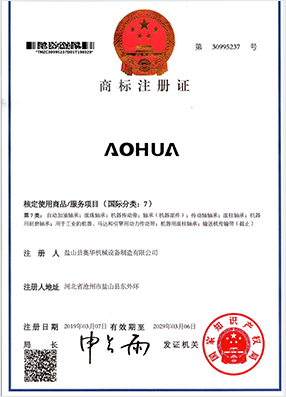 Afrikaans
Afrikaans  Albanian
Albanian  Amharic
Amharic  Arabic
Arabic  Armenian
Armenian  Azerbaijani
Azerbaijani  Basque
Basque  Belarusian
Belarusian  Bengali
Bengali  Bosnian
Bosnian  Bulgarian
Bulgarian  Catalan
Catalan  Cebuano
Cebuano  Corsican
Corsican  Croatian
Croatian  Czech
Czech  Danish
Danish  Dutch
Dutch  English
English  Esperanto
Esperanto  Estonian
Estonian  Finnish
Finnish  French
French  Frisian
Frisian  Galician
Galician  Georgian
Georgian  German
German  Greek
Greek  Gujarati
Gujarati  Haitian Creole
Haitian Creole  hausa
hausa  hawaiian
hawaiian  Hebrew
Hebrew  Hindi
Hindi  Miao
Miao  Hungarian
Hungarian  Icelandic
Icelandic  igbo
igbo  Indonesian
Indonesian  irish
irish  Italian
Italian  Japanese
Japanese  Javanese
Javanese  Kannada
Kannada  kazakh
kazakh  Khmer
Khmer  Rwandese
Rwandese  Korean
Korean  Kurdish
Kurdish  Kyrgyz
Kyrgyz  Lao
Lao  Latin
Latin  Latvian
Latvian  Lithuanian
Lithuanian  Luxembourgish
Luxembourgish  Macedonian
Macedonian  Malgashi
Malgashi  Malay
Malay  Malayalam
Malayalam  Maltese
Maltese  Maori
Maori  Marathi
Marathi  Mongolian
Mongolian  Myanmar
Myanmar  Nepali
Nepali  Norwegian
Norwegian  Norwegian
Norwegian  Occitan
Occitan  Pashto
Pashto  Persian
Persian  Polish
Polish  Portuguese
Portuguese  Punjabi
Punjabi  Romanian
Romanian  Russian
Russian  Samoan
Samoan  Scottish Gaelic
Scottish Gaelic  Serbian
Serbian  Sesotho
Sesotho  Shona
Shona  Sindhi
Sindhi  Sinhala
Sinhala  Slovak
Slovak  Slovenian
Slovenian  Somali
Somali  Spanish
Spanish  Sundanese
Sundanese  Swahili
Swahili  Swedish
Swedish  Tagalog
Tagalog  Tajik
Tajik  Tamil
Tamil  Tatar
Tatar  Telugu
Telugu  Thai
Thai  Turkish
Turkish  Turkmen
Turkmen  Ukrainian
Ukrainian  Urdu
Urdu  Uighur
Uighur  Uzbek
Uzbek  Vietnamese
Vietnamese  Welsh
Welsh  Bantu
Bantu  Yiddish
Yiddish  Yoruba
Yoruba  Zulu
Zulu tail drum pulley
Understanding Tail Drum Pulleys A Key Component in Conveyor Systems
In various industrial settings, efficient material handling is critical for maintaining productivity. Among the essential components of conveyor systems, tail drum pulleys play a vital role in facilitating the smooth operation of these systems. A tail drum pulley, also known as a tail pulley, is typically located at the end of a conveyor belt system, serving both functional and structural purposes. This article will explore the significance of tail drum pulleys, their design, applications, and maintenance considerations.
The Functionality of Tail Drum Pulleys
Tail drum pulleys are primarily responsible for supporting the conveyor belt as it travels through the system. As the belt moves along its path, the tail pulley acts as an anchor point, preventing the belt from sagging and ensuring that it remains aligned and tensioned. This is crucial for the effective operation of the conveyor system, as any misalignment can lead to uneven wear and potential breakdowns.
Additionally, the tail drum pulley is integral to the belt’s return path. After the material is discharged at the discharge point, the belt continues its journey back to the head section of the conveyor for another cycle. This returned segment needs to maintain proper tension and alignment, which is where the tail pulley comes in. It facilitates the loop of the belt, allowing materials to be transported seamlessly, whether they are heavy loads of coal, grains, or packaged goods.
Design Aspects of Tail Drum Pulleys
Tail drum pulleys are designed with durability and functionality in mind. Typically made from high-strength materials like steel or aluminum, they are engineered to withstand the wear and tear of constant belt movement and heavy loads. Their design accounts for various factors, including the diameter size, which can vary depending on the conveyor system's specifications, and the type of bearing systems used, which may include heavy-duty or precision bearings to support the pulley under load.
Further, the surface of tail drum pulleys is often coated or treated to resist corrosion and minimize wear
. Some designs incorporate rubber or other protective materials to enhance traction and reduce slippage of the conveyor belt, further improving the efficiency of the material handling process.tail drum pulley

Applications of Tail Drum Pulleys
Tail drum pulleys find extensive applications across various industries. In mining, they are crucial for the transportation of minerals and aggregates. In agriculture, they help in the movement of crops during harvesting and processing. Moreover, in distribution centers and manufacturing facilities, tail pulleys facilitate the efficient movement of products along conveyor belts.
The versatility of tail drum pulleys allows them to adapt to different conveyor configurations and environments. They can be found in both indoor and outdoor settings, operating in conditions where they might encounter dust, moisture, or extreme temperatures.
Maintenance and Best Practices
To ensure optimal performance and longevity of tail drum pulleys, regular maintenance is essential. This includes inspecting the components for signs of wear, checking tension levels of the conveyor belt, and ensuring alignment. Any misalignment or wear could lead to increased friction, resulting in premature failure of the pulley or the conveyor system.
Lubrication of the bearings is also a critical maintenance task. Depending on the operating environment, the frequency and type of lubrication may vary. Keeping the pulleys clean and free from debris will also contribute to their efficient operation.
Conclusion
In conclusion, tail drum pulleys are a fundamental component of conveyor systems, enhancing the effectiveness and reliability of material movement in multiple industries. Their design, purpose, and maintenance are pivotal for the overall functionality of conveyor systems, ensuring that materials are transported efficiently and safely. As industries continue to evolve and expand, the significance of tail drum pulleys will only grow, reinforcing their place as a critical element in modern material handling solutions.
-
Revolutionizing Conveyor Reliability with Advanced Rubber Lagging PulleysNewsJul.22,2025
-
Powering Precision and Durability with Expert Manufacturers of Conveyor ComponentsNewsJul.22,2025
-
Optimizing Conveyor Systems with Advanced Conveyor AccessoriesNewsJul.22,2025
-
Maximize Conveyor Efficiency with Quality Conveyor Idler PulleysNewsJul.22,2025
-
Future-Proof Your Conveyor System with High-Performance Polyurethane RollerNewsJul.22,2025
-
Driving Efficiency Forward with Quality Idlers and RollersNewsJul.22,2025





























